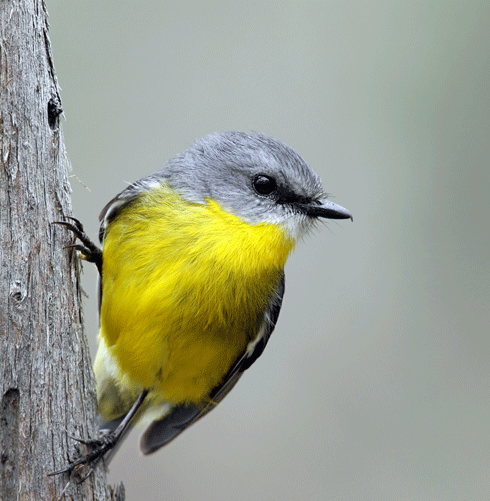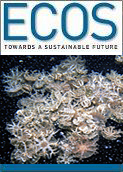
|
Published: 24 September 2012
Conservation reserve reverses bird decline
The decline of threatened woodland birds on a private conservation reserve in southeastern NSW over the past five years has been markedly reversed, with species such as the speckled warbler increasing by up to 700 per cent, according to a five-year ecological outcomes report.

|
|
The population of eastern yellow robins at the reserve has increased seven-fold since 2007. Credit:
© Rob Drummond
|
Monitoring data from Bush Heritage’s Scottsdale reserve also reveal a 400 per cent increase in two other threatened woodland birds on the reserve – the hooded and scarlet robins.
‘These are significant results for protecting threatened birds in this part of NSW that illustrate how our approach to improving vegetation diversity and woodland bird habitat can successfully address vulnerable and declining bird populations,’ says Bush Heritage ecologist Sandy Gilmore.
Scottsdale Reserve – a key link in the Kosciuszko 2 Coast project that helps landowners create connections between remnant woodlands and grasslands in the region – also supports other declining species such as the eastern yellow robin, red-capped robin and jacky winter.
The eastern yellow robin has increased by 700 per cent over the past five years and the jacky winter by 200 per cent.
‘Our scientific monitoring data shows a 36 per cent increase in total abundance across 97 bird species within 11 foraging guilds on the reserve, including vulnerable birds such as the brown treecreeper,’ says Gilmore.
‘While bird abundance results in each year were influenced by factors such as rainfall, the overall increase over five years can be attributed to improvement in bird habitat. This shows how improvements in vegetation diversity and ecosystem health can successfully boost bird populations and reduce their susceptibility to climatic factors.’
According to the five-year report (2007–2011), bird abundance is an excellent high-level indicator of ecosystem health. The report found the most important factors in boosting abundance were removing sheep (which increased plant seed production and leaf matter available to feed insects), and re-establishing tree cover (which increased the variety of ground cover that supports ground-feeding birds).
‘These findings re-affirm the value of Bush Heritage’s goal to re-establish nationally endangered yellow-box woodland to previous levels on Scottsdale Reserve. It also reaffirms that our conservation management is on the right track,’ says Gilmore.
‘Our results at Scottsdale suggest other grassy woodlands in the region and elsewhere in Australia could achieve a similar boost to biodiversity by improving their conservation management along similar lines.’
Source: Bush Heritage



